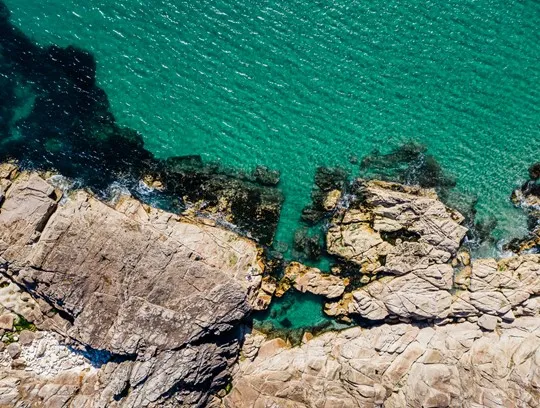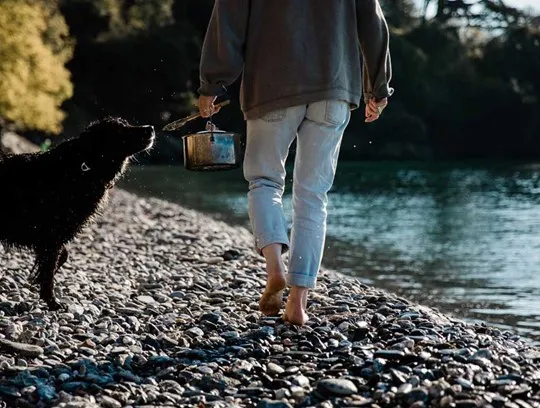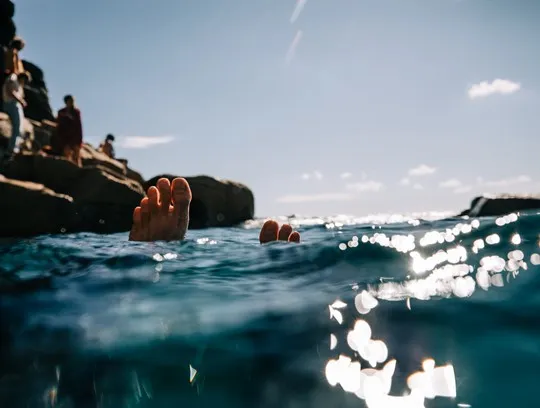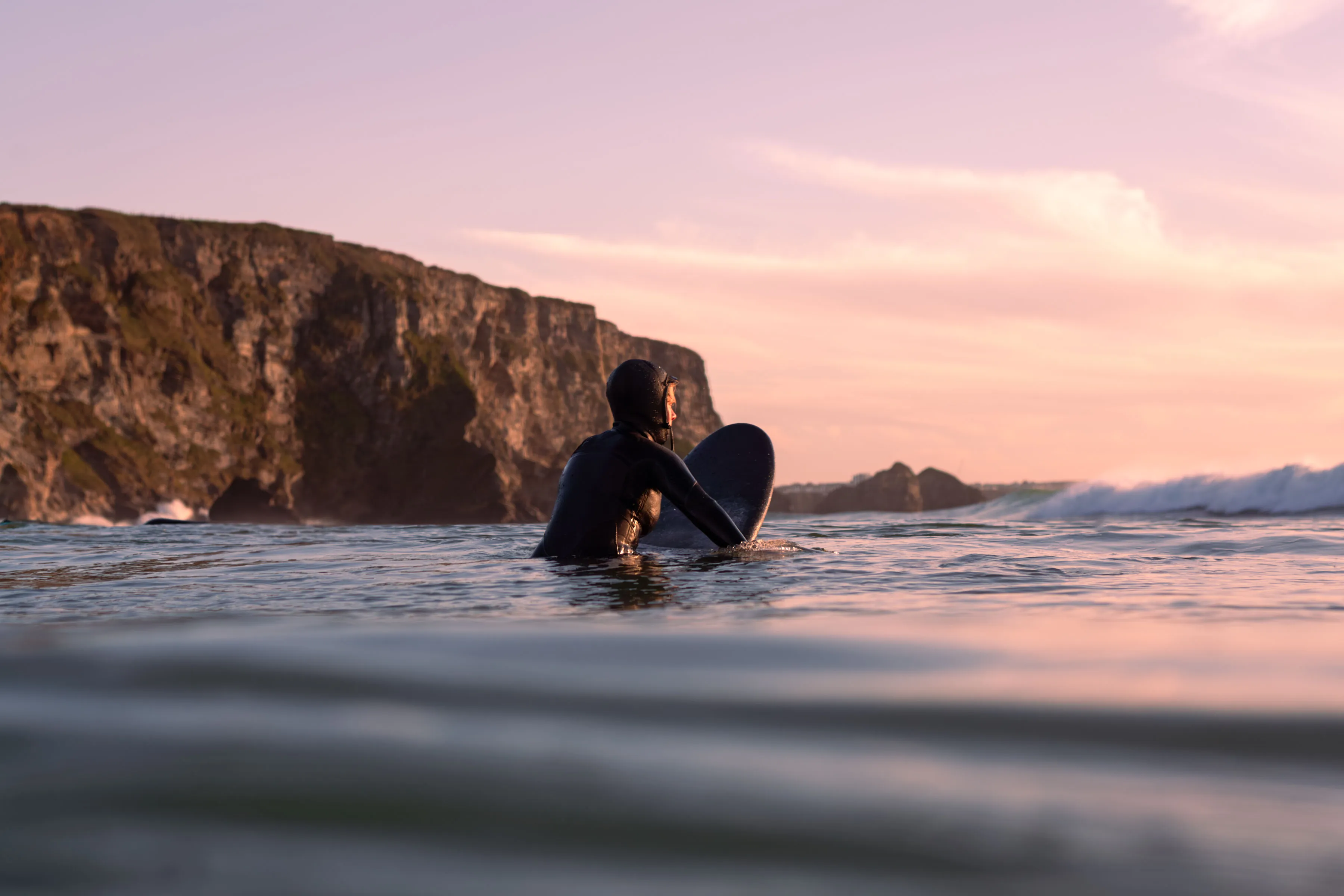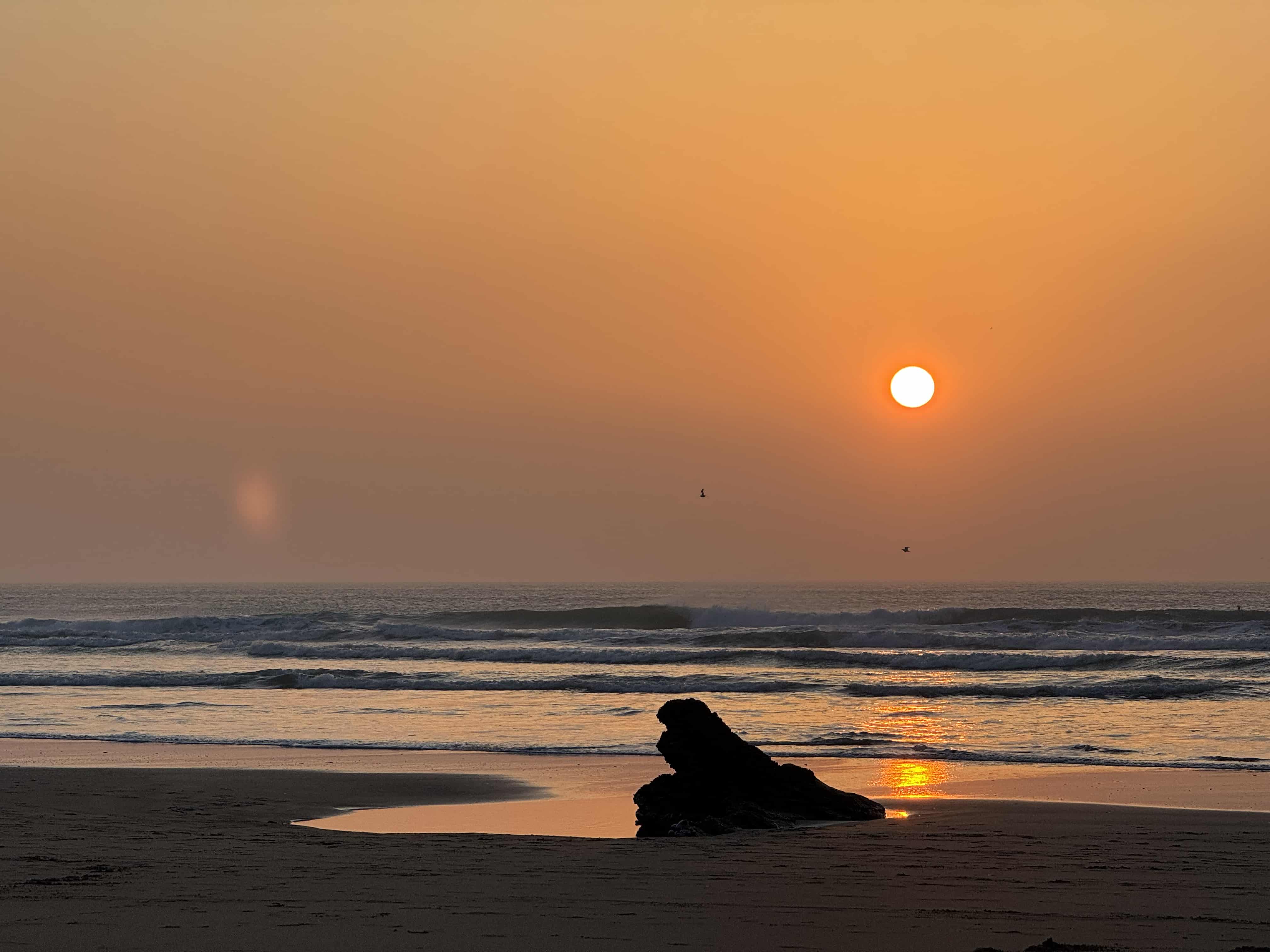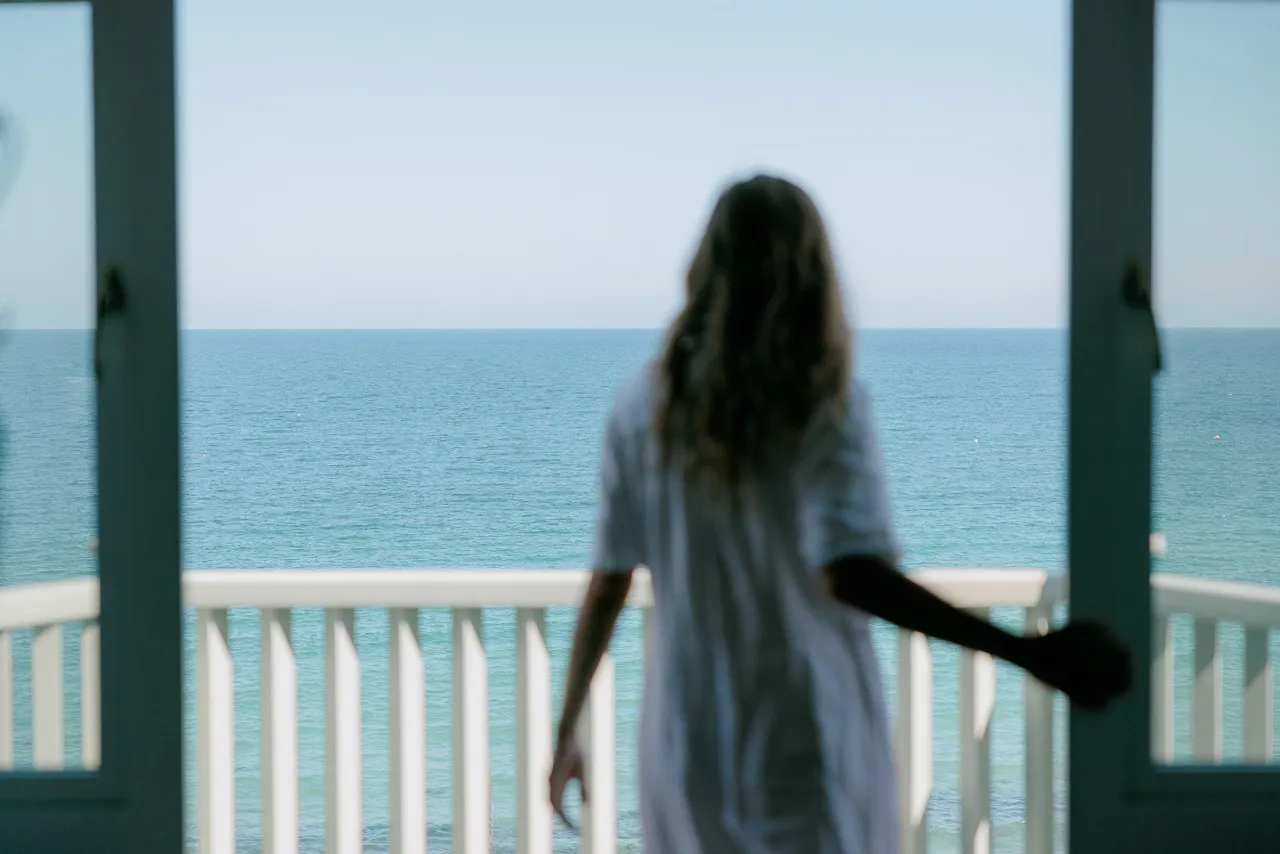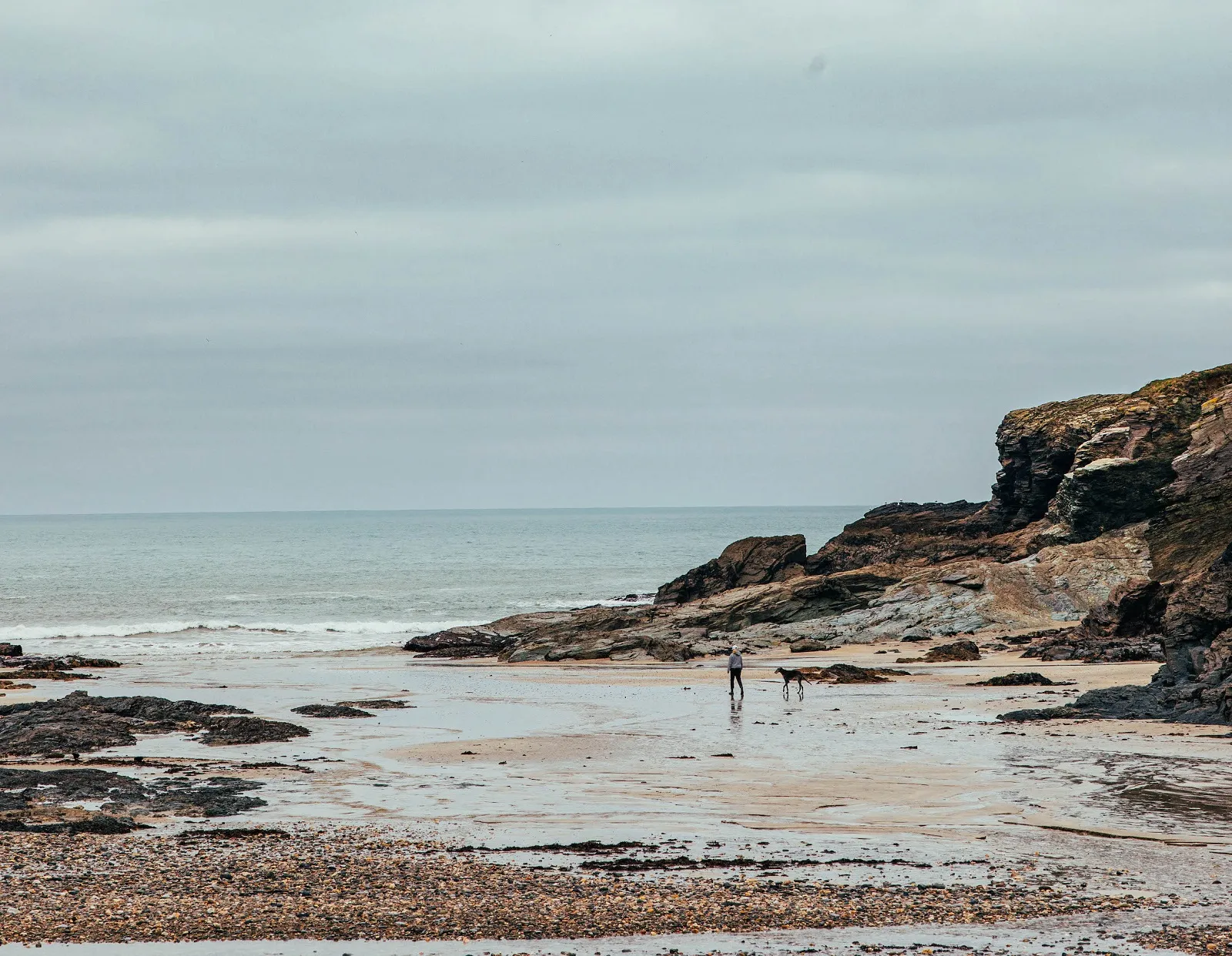Home / Natural glow
Natural glow
26th July 2022
Among the slippery rocks and swaying seaweed of Cornwall’s many coves and rock pools lie bright colour shows and surprising shimmers of pinks, yellows and greens. From cunningly disguised crabs and solar-powered slugs, to UV discoveries and night swims in a sparkling sea, we talked to rock-pooling expert Heather Buttivant about what to look out for…
The coastal waters of Cornwall are micro worlds of amazing creatures and plants in a collage of colour that isn’t always obvious, but can be a dazzling discovery for any intrepid beach explorer.
Want to stay in a luxury holiday house with a view of the sea? Check out our cottages with sea views.
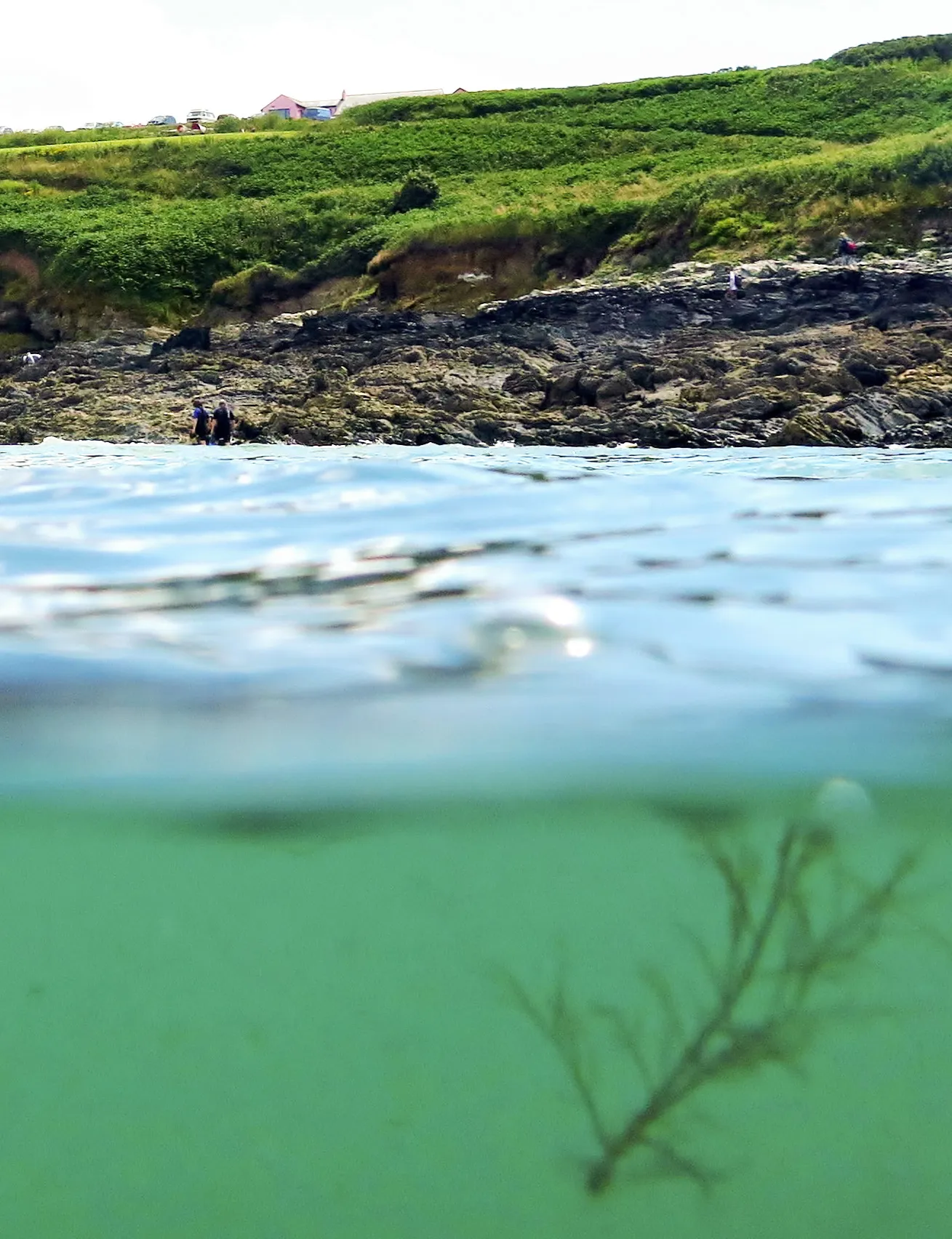
Image: Crantock, Cornwall by Hydro Motion Media
“I grew up on the north coast of Cornwall and spent a lot of my childhood on beaches,” says Heather. “I was always completely fascinated by the weirdness of that world, and by the colours. Collecting shells was a massive thing as a kid, and I’ve returned to it as an adult. It’s become my world again.”
While she isn’t a formally trained marine biologist, through courses and working alongside experts, Heather has developed an expert eye and brought this to her enthusiasm for rock pools. She posts about her discoveries at the Cornish Rock Pools website, and has written two books Rock Pool: Extraordinary Encounters Between the Tides, and Beach Explorer: 50 Things to See and Discover.
“We have many brightly coloured anemones, like the wonderful strawberry anemone, then there are yellow and orange cup corals, which are the jewels of the rock pools.”
“I wanted to share my excitement about all of this marine life with people who aren’t scientists,” she explains. “It seemed to be a gap; there was very little around that was designed to tell people about our fascinating marine life – especially the marine life we have around Cornwall.”
Check out our other locations and other retreats across North Cornwall.
Colourful coral
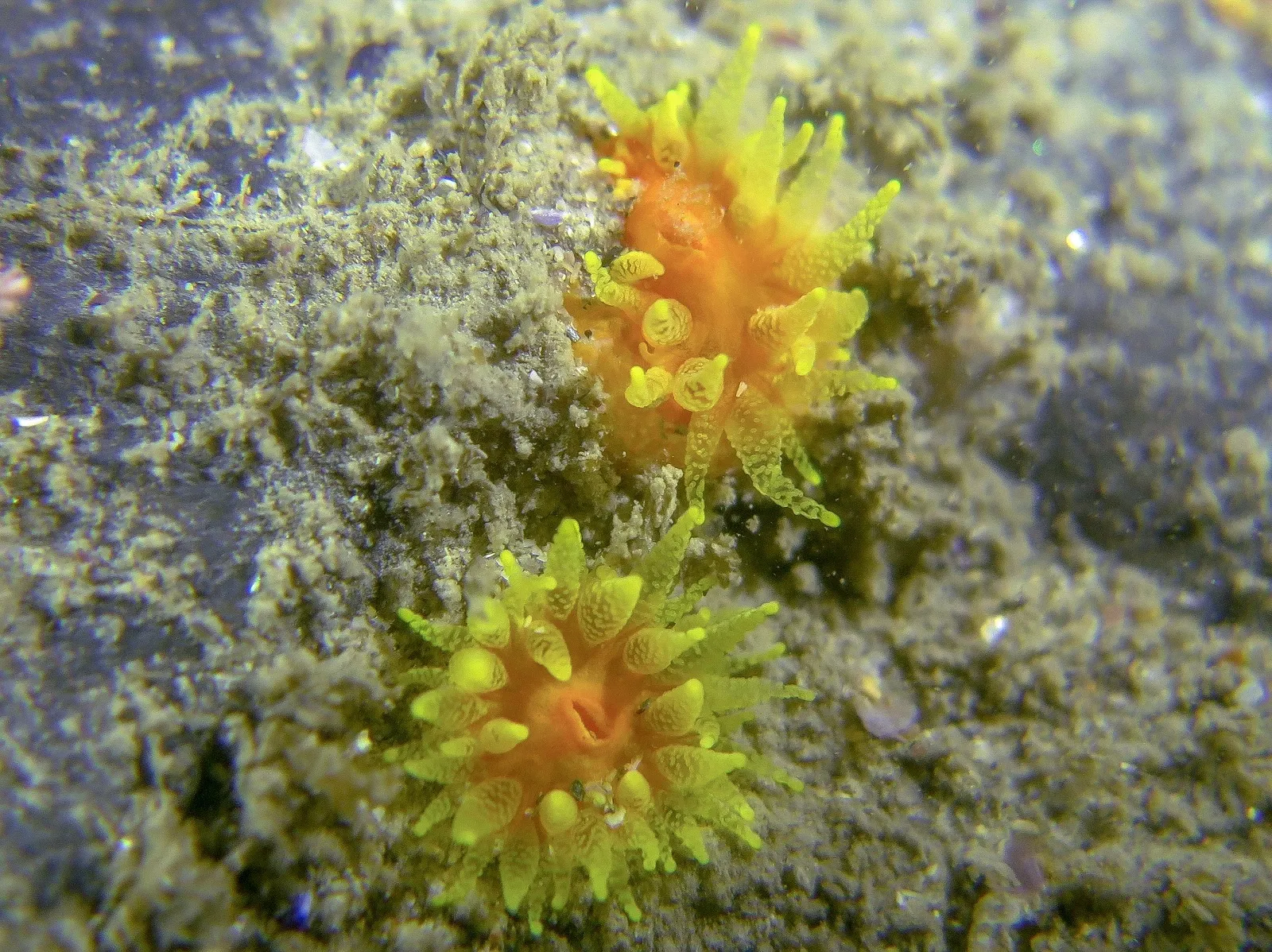
Image: Scarlet and gold star coral (Balanonphyllia) by Hydro Motion Media
Striking colours can be uncovered just below the surface, from brightly coloured anemones – like “the wonderful strawberry anemone” – to yellow and orange cup corals, “the jewels of the rock pools”.
“We also have a massive variety of seaweeds that come in a huge range of colours, from reds to browns to greens,” she continues. “My favourite to show children is rainbow wrack; in the water it’s the most wonderful iridescent turquoise colour. But out of the water it just looks a dull green-brown.”
Shimmering swimmers
If you’re exploring deeper rockpools or have a mask and snorkel to hand, many species of fish can be found close to the shore. The corkwing wrasse builds its seaweed nest just offshore, while the young of the larger ballan wrasse – also sometimes seen in rock pools – are a bright emerald green.
Another fish you might catch sight of in shallow waters, pouting or bib, is a deep coppery colour with three or four vertical bands that shimmer in the light shining down through the water. They like mixed rock and sand habitats, as well as ship wrecks.
Discover more of Cornwall with our favourite places to watch the ocean and go sea spotting.
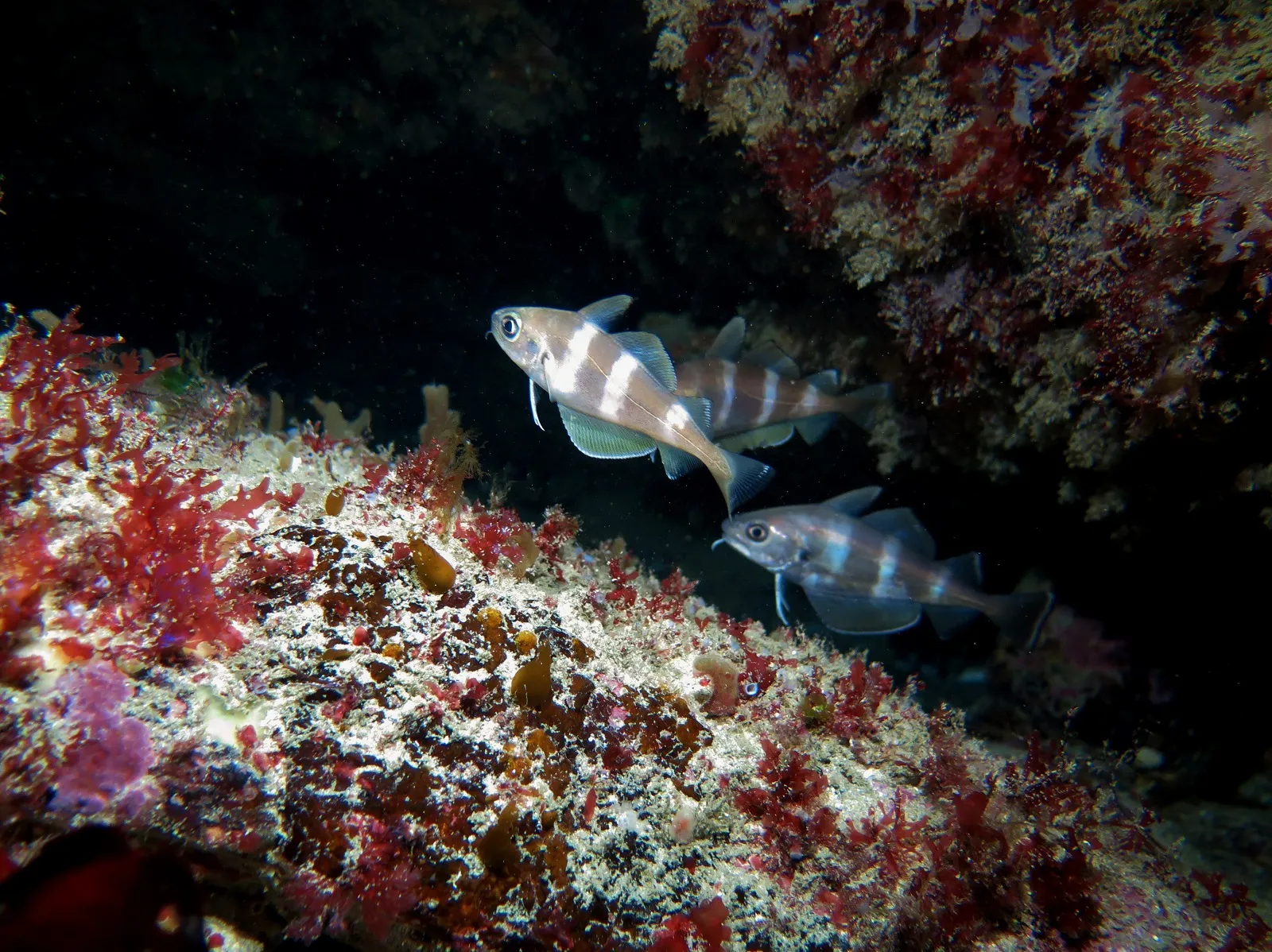
Image: Pouting (Trisopterus luscus) by Hydro Motion Media
They might not sound like the most appealing discovery, but unlike their garden-dwelling namesake, sea slugs actually take on an infinite variety of colours. They’re not easy to find, but if you’re lucky to discover one you may be surprised at these “tiny beacons of yellow, green, orange, purple or red” – “It can become an obsessive hunt,” says Heather.
Like their fellow rockpool creatures, sea slugs are often coloured to match the seaweed, rocks or encrusting animals in their habitats – and will change colour as it goes, or after a meal. “The great grey sea slug feeds on anemones; after it’s eaten, it’ll turn the red or pink of the anemone it’s just eaten – and also retain some of its stinging cells, keeping them as a defence on its back,” Heather explains.
“They just look like another rock covered in seaweed until they get up and run off.”
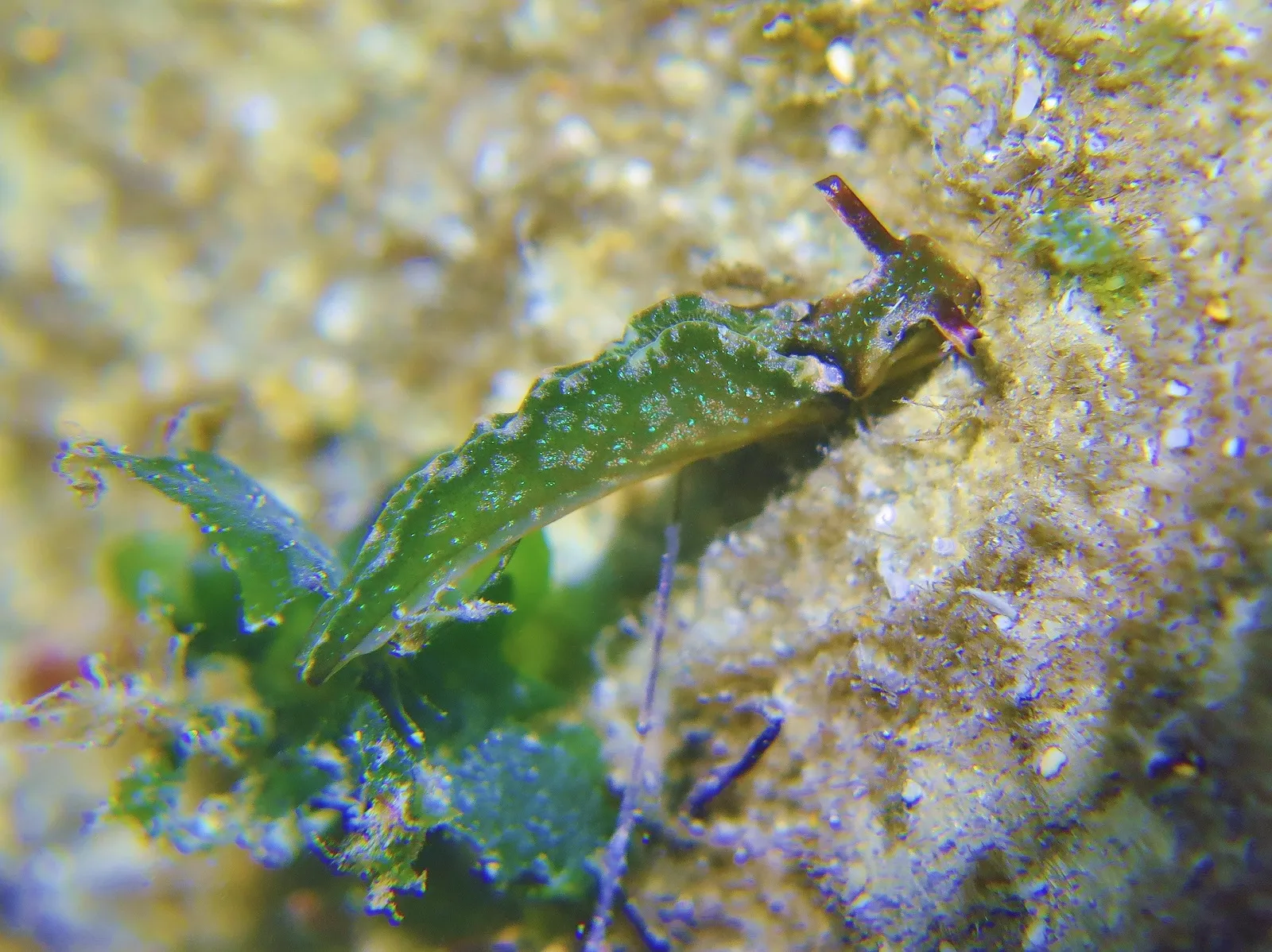
Image: Solar-powered sea slug (Elysia viridis) by Hydro Motion Media
Some species of crab also take to wearing their habitat, by attaching pieces of sea sponge to their shell and limbs or using little ‘Velcro-style’ hairs to drape themselves in seaweed. “They just look like another rock covered in seaweed until they get up and run off,” says Heather.
Night and day
A lot of sea creatures are more active at night, so a rock-pooling expedition by torchlight may reveal more than on a sunny beach afternoon – with an added sense of adventure to boot.
Along Cornwall’s south coast, it’s also possible – though rare – to see the bioluminescence (also known as sea sparkle and phosphorescence) created by planktonic algal blooms, shining out from the water. Nothing beats a night swim (stay safely within your depth) under the stars above, with the sparkling sea glinting between your fingertips as you stroke through the water below. These areas of phytoplankton are naturally occurring, generally in mid-late summer or early autumn, and are not harmful to the coastal environment.
“Nothing beats a night swim under the stars above, with the sparkling sea glinting between your fingertips as you stroke through the water below.”
A far more common phenomenon revealed by an ultra violet (UV) light (if you happen to have one, or join an organised tour) is the fluorescence that specific marine life creates by re-emitting sunlight at a different wavelength. The snakelocks anemone shines neon green under UV light and some species of crab appear blue.
Making discoveries
“Just take the time to go slowly, look closely at pretty much any rock pool and you’ll start to notice the animals there,” Heather recommends. “But bear in mind that these things are quite well hidden!”
These creatures are best observed in their natural environment, so resist the temptation to catch them in a bucket if you can – or at least make sure your bucket is full of seawater, and that you put them back in the same place you found them before you leave. Animals can also be easily injured, so avoid using nets if possible.
“Prawns and blennies will swim over to have a look if a camera is in the water, and it’s not that unusual to see two hermit crabs having a fight,” notes Heather. “These things are absolutely fascinating to watch.”
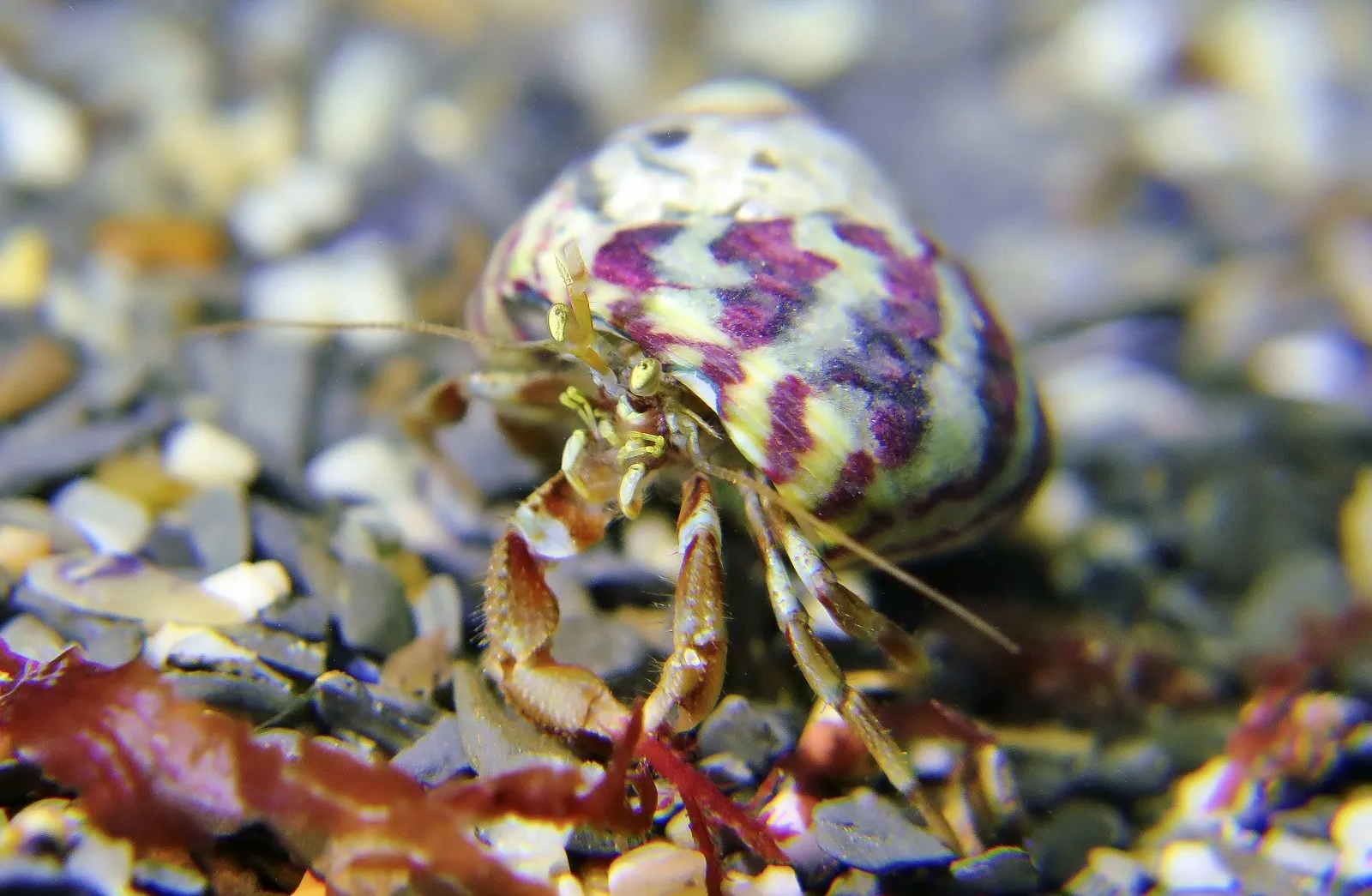
Image: Hermit crab (Pagurus bernhardus) by Hydro Motion Media
One of the best ways to make discoveries is to join a tour. The Cornwall Wildlife Trust organises beach events throughout the year, and there are also local conservation groups running rock pool activities across Cornwall.
Find tips on Heather’s website, and pick up a copy of her books in bookshops around the county and online.
